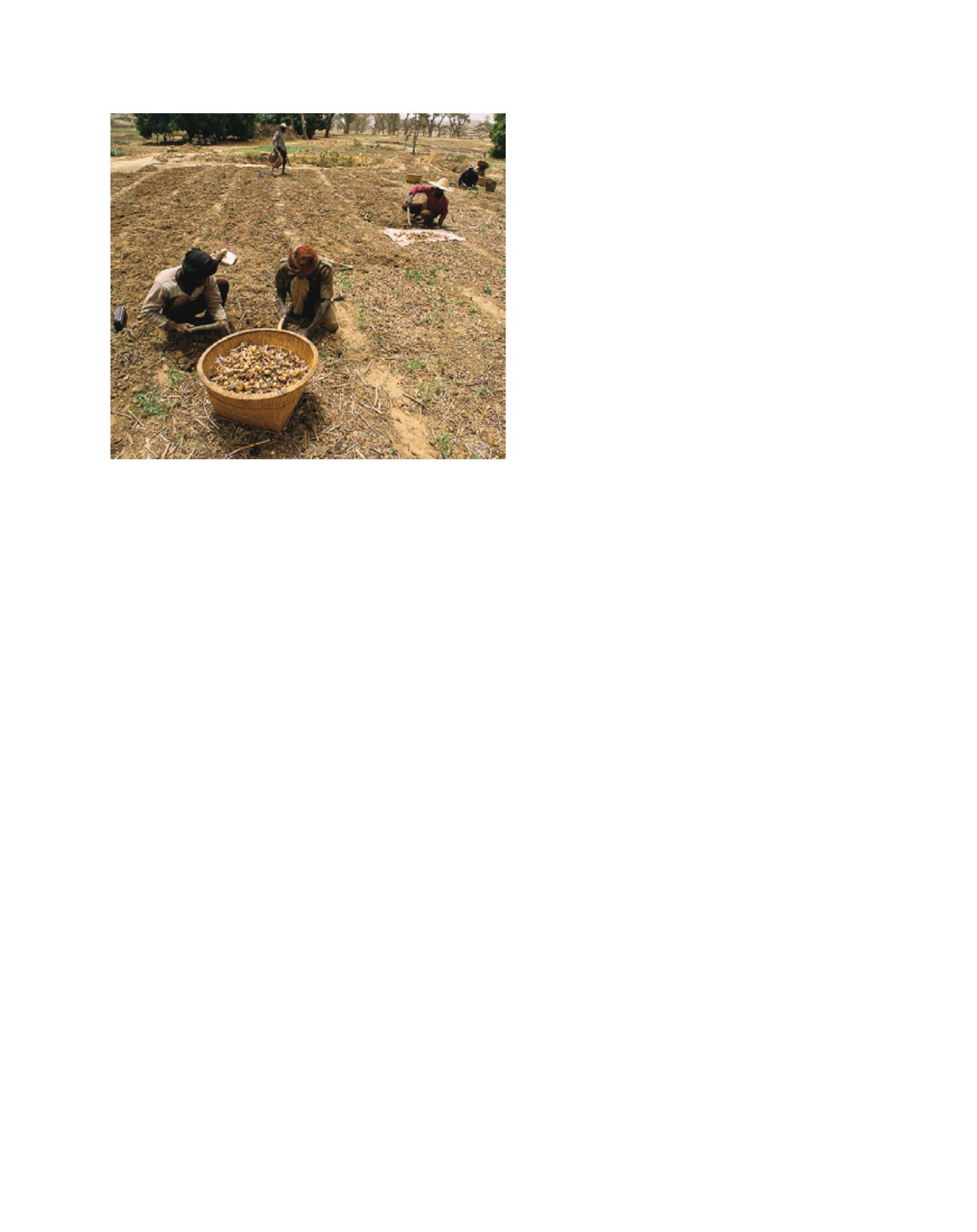

[
] 102
W
ater
E
ducation
and
I
nstitutional
D
evelopment
consumer sectors, improve their abilities to perform their core roles
and responsibilities, solve problems, define and achieve objectives,
understand and address needs and effectively work together in order
to ensure the safe and productive use of wastewater in agriculture”.
4
This definition carries important implications for the differ-
ent levels of cooperation and capacity development activities at
the individual, organizational and system levels. At the system
level, several government ministries with their own policies,
laws, regulations and standards cooperate and exchange experi-
ences on wastewater use in agriculture to raise awareness among
each other and learn from successful policies in similar contexts.
At the organizational level, government agencies and institu-
tions such as ministries of agriculture, water, environment and
health can cooperate and capitalize on their experiences from the
diverse nature of the respective ministries with respect to infra-
structure, human, financial and information resources. At the
individual level, various skilled professionals from public health,
agriculture, research, engineering, education and other sectors
can exchange experiences and share lessons with each other.
Cooperation is at the heart of the SUWA project structure:
between individuals, between institutions and organizations, and
between governments. Through its regional workshops and online
platform
5
, the project has:
• drawn on the international expertise, standards and innovations
of various expert groups and research institutes involved in the
spirit of cooperation work
• enabled knowledge and technology sharing among participants
and learning from each others’ experience of best practice
implementation, especially those between planning and
management bodies from various developing countries
• ensured the cooperation of UN-Water members and partners as
well as other collaborative partners of the project
• improved knowledge and skills on the safe use of wastewater
in agriculture, also acquired through the exchange of lessons
learned and the cooperation of participants with each other.
Capacity Development to Support National
Drought Management Policies initiative
Drought is one of the world’s worst natural hazards,
6
with long-term social, economic and environmental
impacts, and often referred to as a “creeping phenom-
enon”.
7
Generally, droughts emanate from a deficiency
of precipitation extended over a long period of time.
Yet there is no single, universally accepted definition
of drought because of its multifaceted nature and its
diverse impacts across regions.
What is clear, however, is that the impacts of
drought are diverse and complex in nature. The most
direct impacts include reduced crop yield, diminished
rangeland and forest productivity and low water levels.
Drought threatens livestock as well as wildlife and fish
habitats while it increases fire hazard. According to the
International Decade for Natural Disaster Reduction in
1995, drought accounts for 33 per cent of the people
affected by natural disasters, 22 per cent of the damage
from disasters and 3 per cent of the number of deaths
attributed to natural hazards. Though drought affects
virtually all climatic regions, those most affected
include the horn of Africa, Australia, Brazil, Central
Asia, China, England and Wales, India, South-Eastern
Europe and the United States of America. Drought is
expected to increase in frequency and extent due to
climate change. The fraction of land surface area expe-
riencing drought conditions had grown from 10-15
per cent in the early 1970s to more than 30 per cent
by early 2000.
8
The newly started UN-Water initiative on
Capacity Development to Support National Drought
Management Policies was launched in March
2013. Under UN-Water, the World Meteorological
Organization, United Nations Convention to Combat
Desertification, FAO and UNW-DPC will cooperate
in this initiative throughout 2012-2013 to raise the
capacity of stakeholders at all levels to support the
development of risk-based national drought manage-
ment policies, based on elements proposed in the
compendium of drought management policy.
9
Despite the repeated occurrence of drought and
its tremendous effects on livelihoods and economies
throughout human history, few concerted efforts are
taking place to formulate and adopt national drought
management policies. Moving countries away from
crisis management to a more proactive, risk-based
approach to national drought management policies
requires the involvement of stakeholders at different
levels. To ensure the effectiveness of a transition to
the new paradigm, capacities need to be developed in
various ministries and national institutions.
The differences between countries in terms of their
vulnerability and institutional capacities will call for
different drought management policies. As drought
management strategies need to take into account the
specific national contexts of existing capacities and
priorities, no single, optimal drought management
strategy can be prescribed for all countries.
10
The impacts of drought are diverse and complex, threatening crop yields,
productivity, livestock and wildlife
Image: Curt Carnemark


















